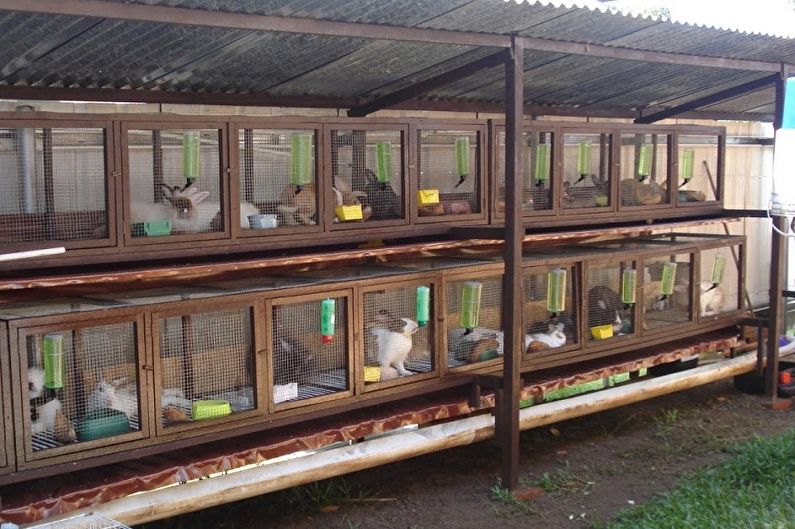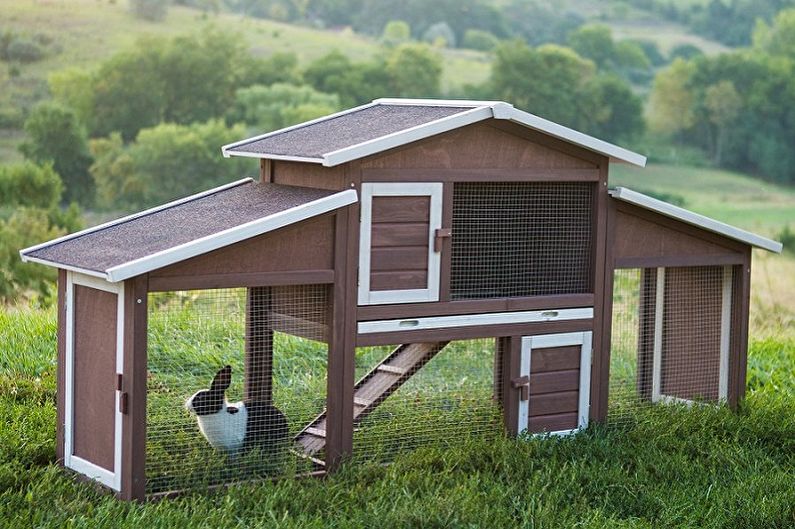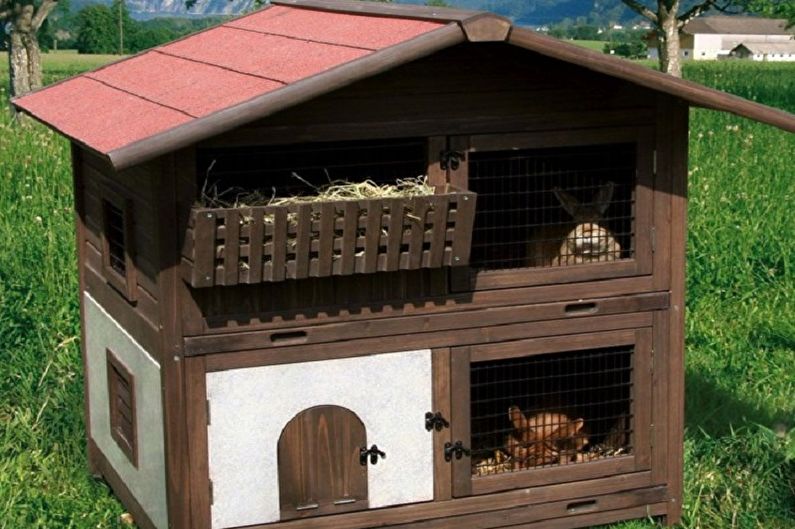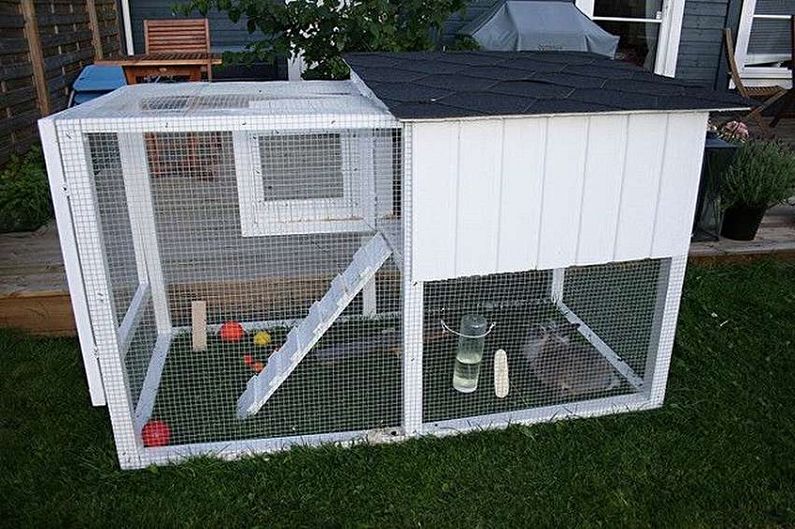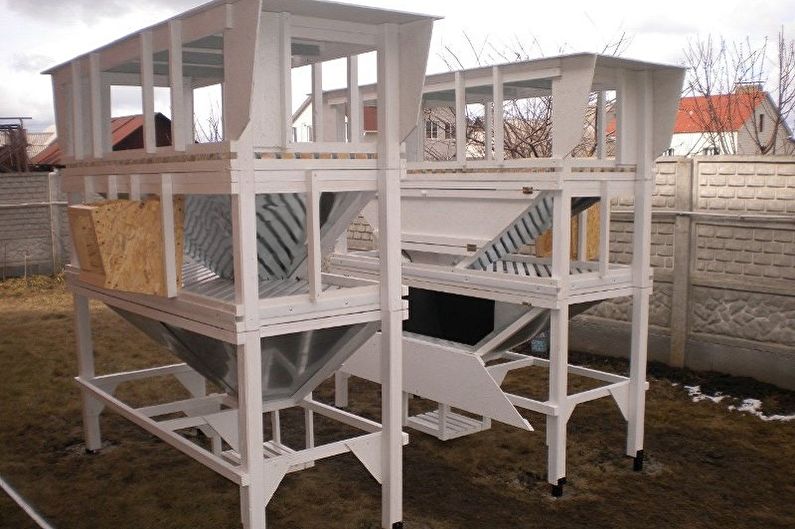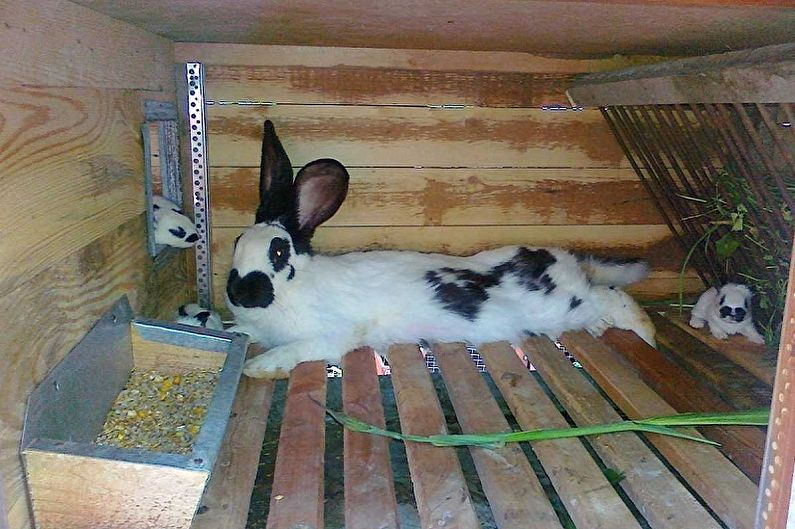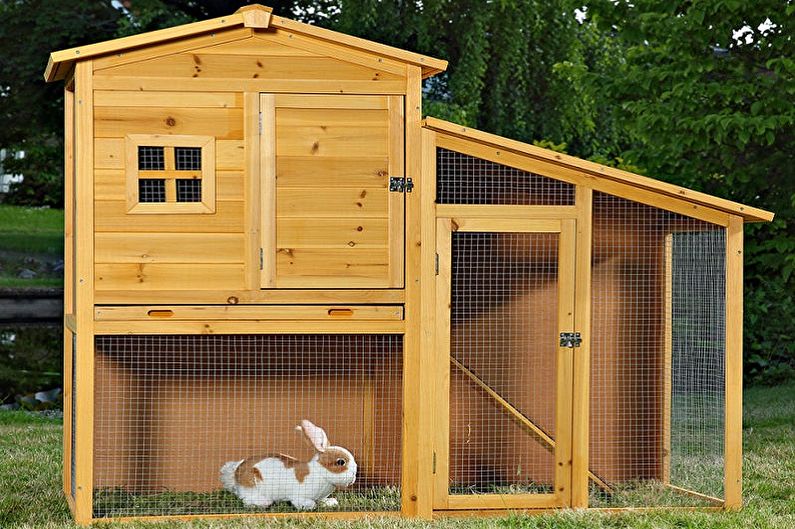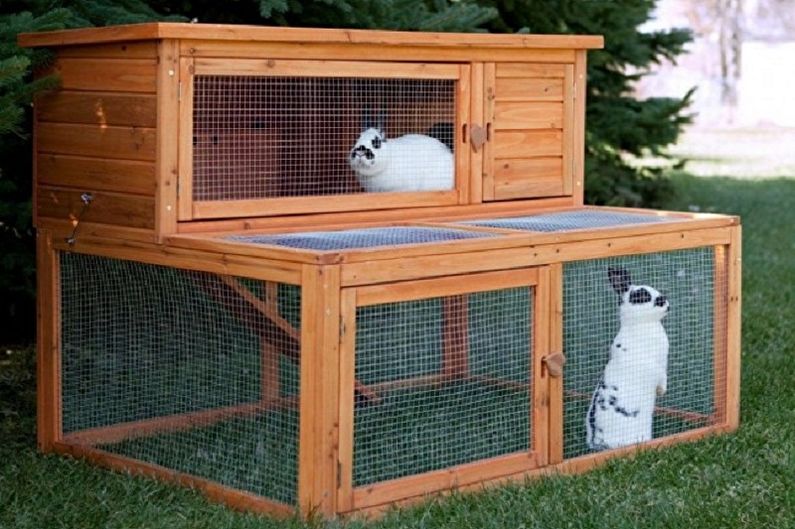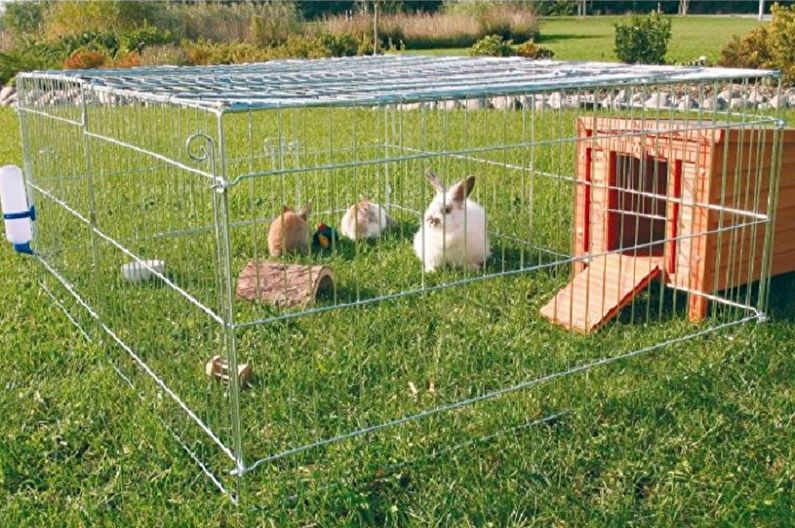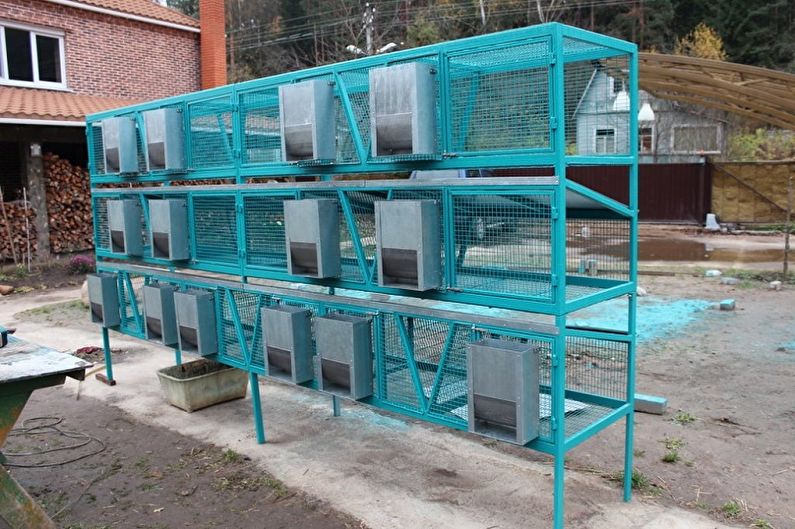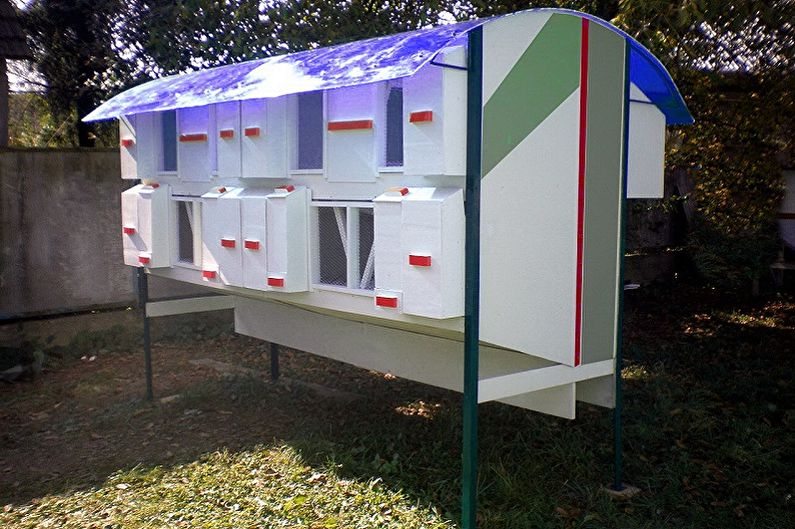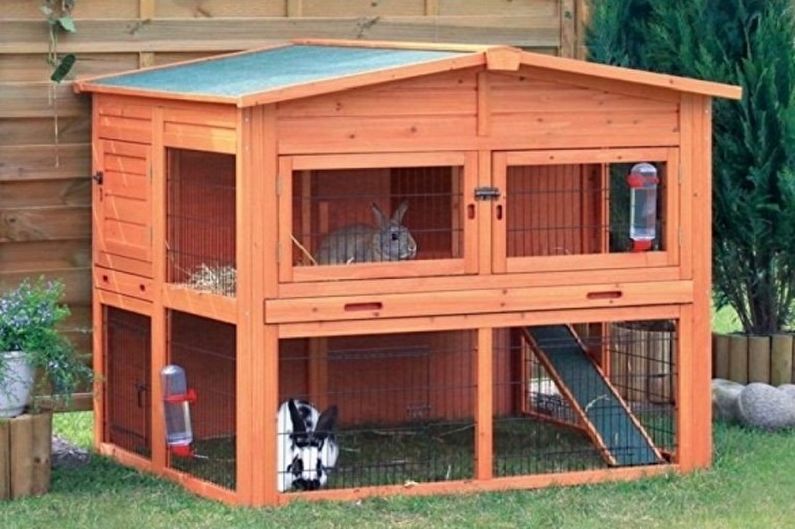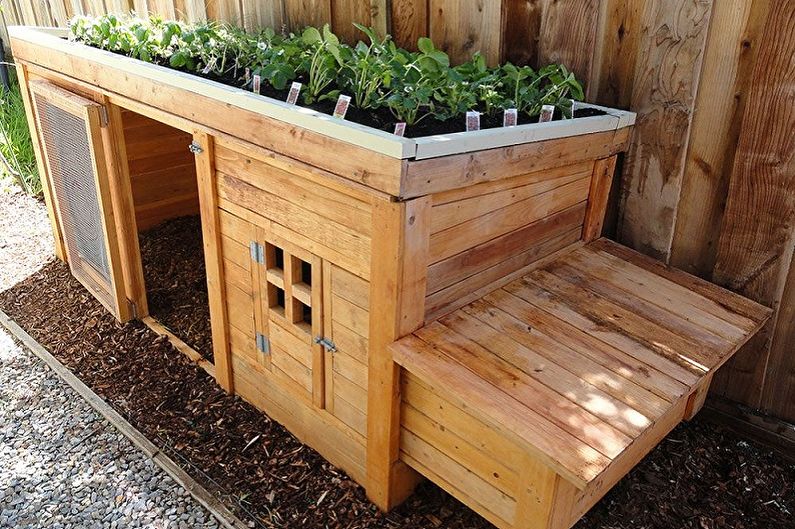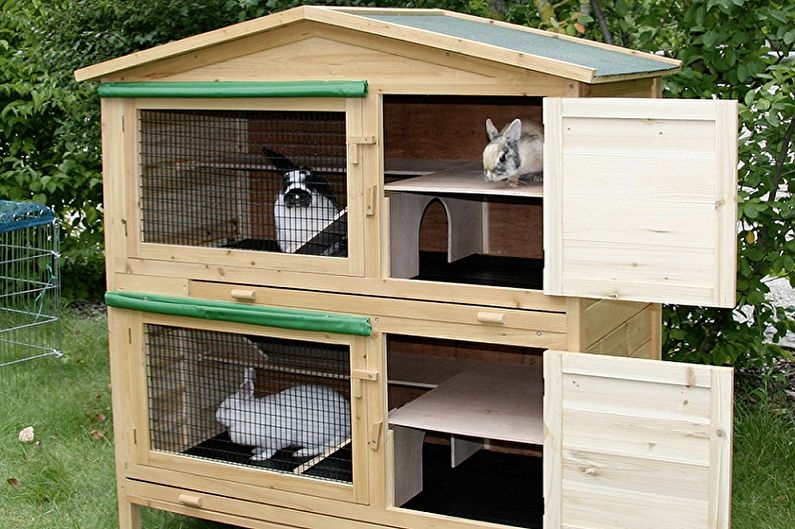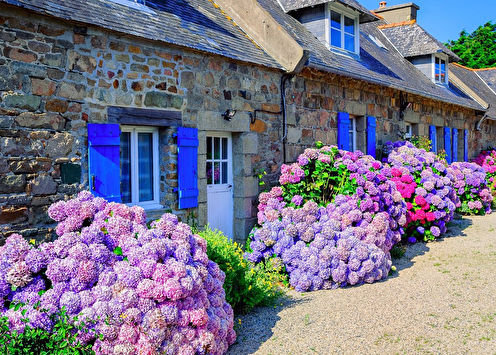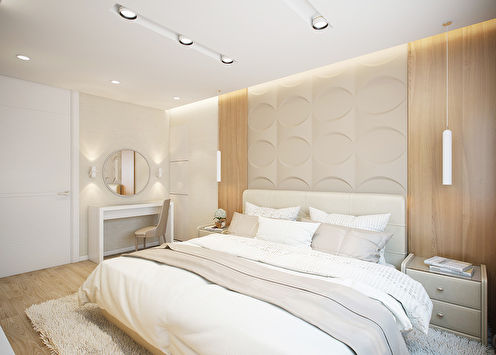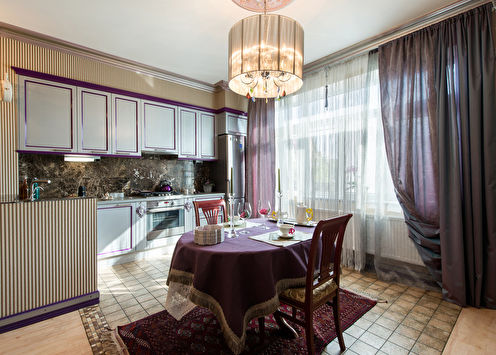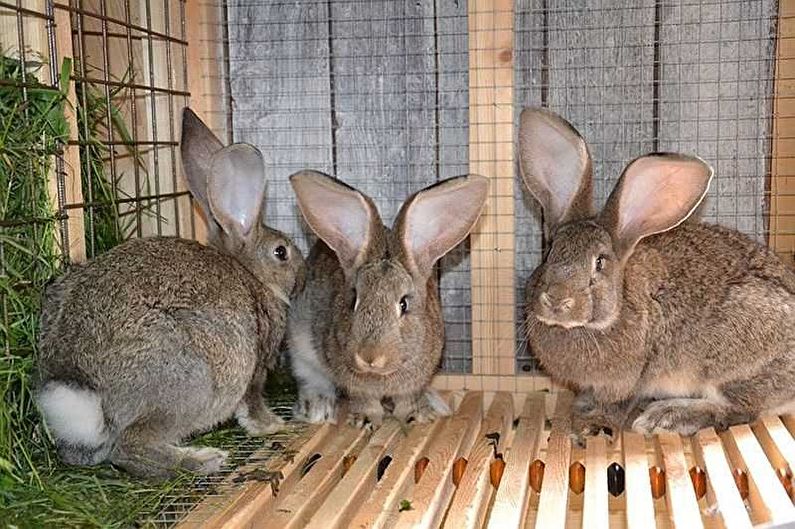
Having a properly equipped rabbitry is one of the most important conditions for keeping these fluffy rodents. Both domestic and decorative breeds need a separate space - it allows you to provide the necessary care and protect pets from possible troubles. With the availability of materials and minimal skills in handling tools, making cages for rabbits with your own hands is quite simple. Useful recommendations, photo examples and a small guide to their construction can be found on this page.
Features of the manufacture of cells
Before you start work on creating housing for rabbits, it is worth familiarizing yourself with the habits and physiology of future inhabitants. The most comfortable climate for these animals throughout the year is moderate heat (+ 12 ... + 18C), average air humidity (60–75%), and the absence of wind and drafts. Lowering the temperature to -25C, as well as heat above + 30C, excessive dryness or humidity are critical and can lead to diseases or even death of animals. Rabbits develop best in the open air, and manure fumes (ammonia) and dust, which are usually found in sheds, negatively affect their health.
When building cages for domesticated hares, it is very important to provide a method for cleaning surfaces from contamination. For example, the floors in the boxes are often made removable from wooden slats or nets, which allows you to collect waste in the pan located below, and the grates themselves can be easily washed and dried if necessary. The solid walls of rabbitry protect pets from drafts, rats and insects, but from the side of the feeders it is always worth leaving a fine mesh for ventilation. For outdoor and portable structures, it is necessary to take care of a moisture-proof roof, which, at the same time, will not be too hot from the sun. The cell doors should be closed tightly without leaving gaps, and the locks themselves should be fixed so that only the owners can open them.
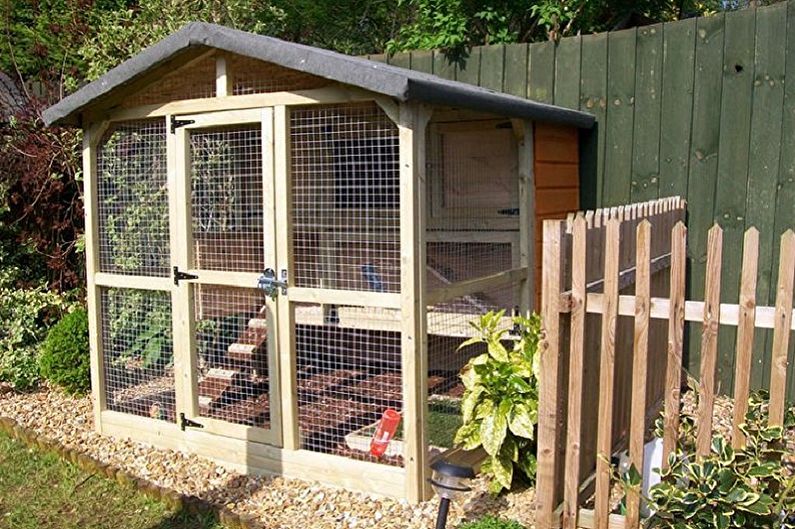
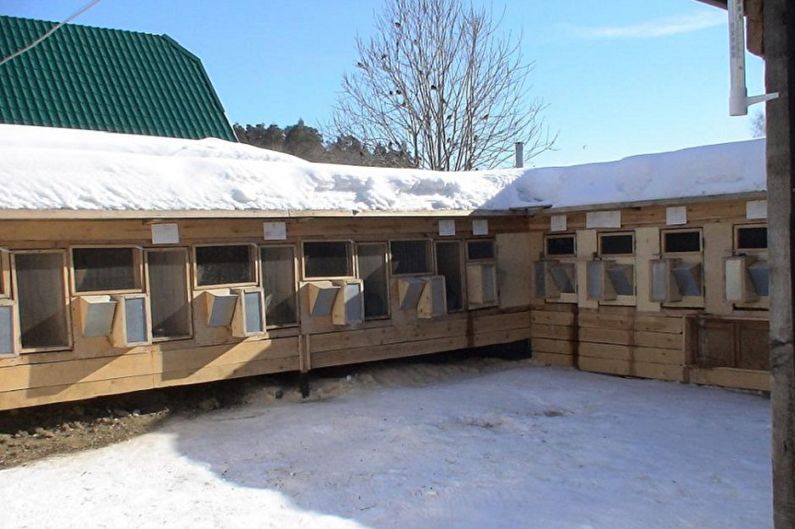
Types of Rabbit Cages
It is possible to classify cells for rabbits according to the following criteria:
- by type of pets (for large or small breeds, common or single, cages for mating, mother breeding, cages for young animals);
- by the method of operation (stationary and portable, street, indoor, universal);
- by the number of tiers;
- according to the type of material used (wood, from chipboard / fiberboard / plywood, metal, mesh, plastic, combined).
Industrial cages for rabbit farms are significantly different from the decorated "houses" for decorative pets. The latter are usually kept in boxes consisting of a deep plastic tray and mesh. The doors can be plastic or plexiglass, inside there is a place for bedding, a feeder, sometimes an additional closed compartment, so that the animal can hide.
Individuals bred for economic purposes are often located in multi-storey structures with a large number of separate enclosures. Such a cell can be either purchased ready-made or built independently using available means.

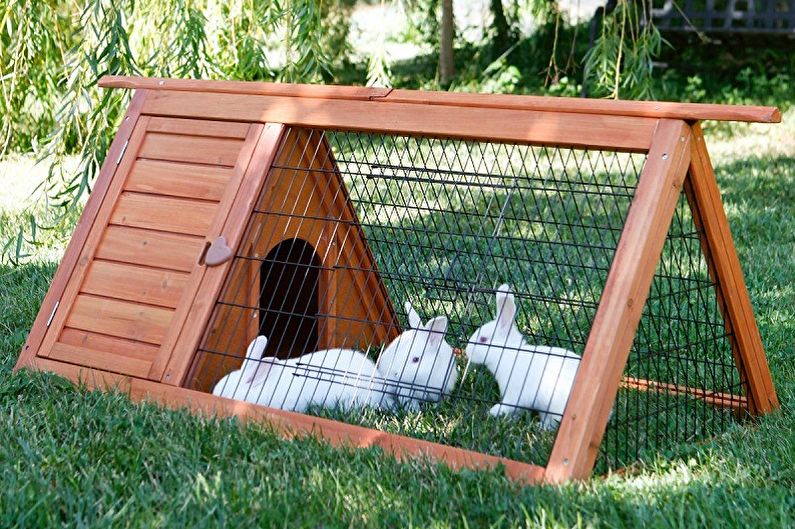
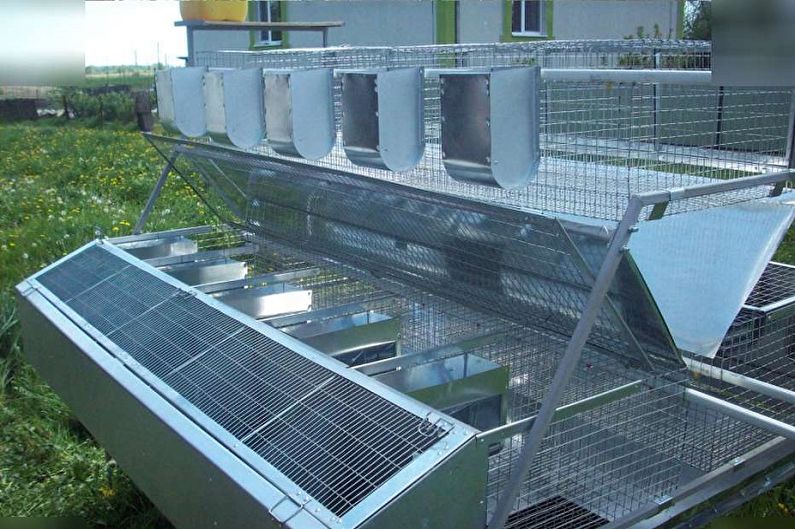
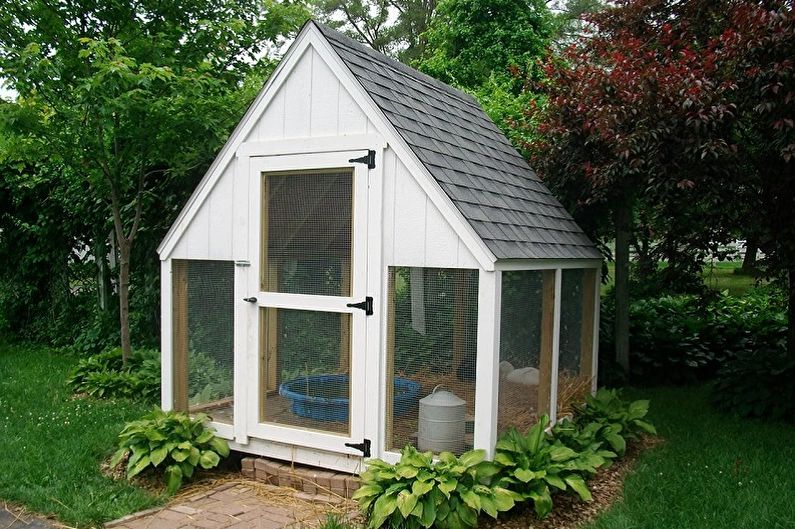
Stages of building a cage for rabbits
Making cages for rabbits with their own hands from scratch involves several successive steps. Each of them is quite significant, requires thoughtfulness and accuracy in the work, but if you approach the matter with all responsibility, the product will serve for many years.
Measurements and drawings
Optimum dimensions are selected depending on the breed of animals, their age and quantity.On average, for females with offspring, a cage about 170 cm long, 60–70 cm high and 100 cm wide is planned. Young growth from rabbits is planted at the age of 1.5 months, in groups of 3-5. Adult individuals (older than 3 months) are kept fattening in individual boxes about 150x60x70 cm. The area for one rabbit should be at least 0.3-0.5 m2, the height of the walls - from 35 cm.
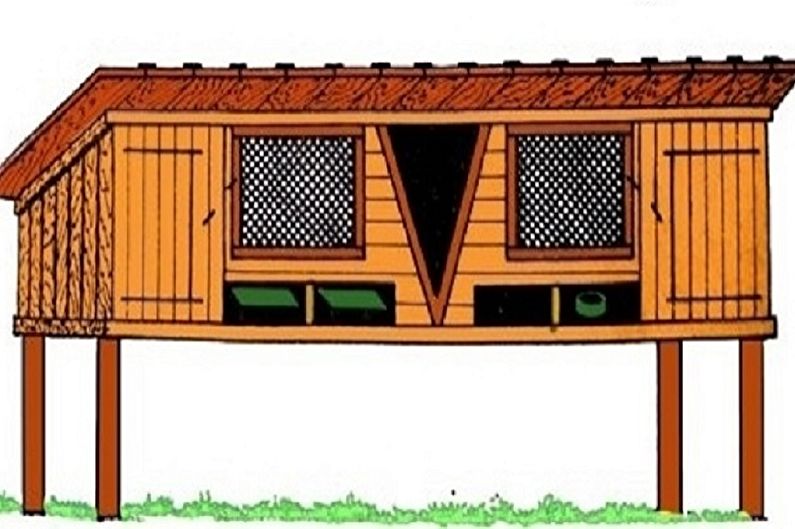
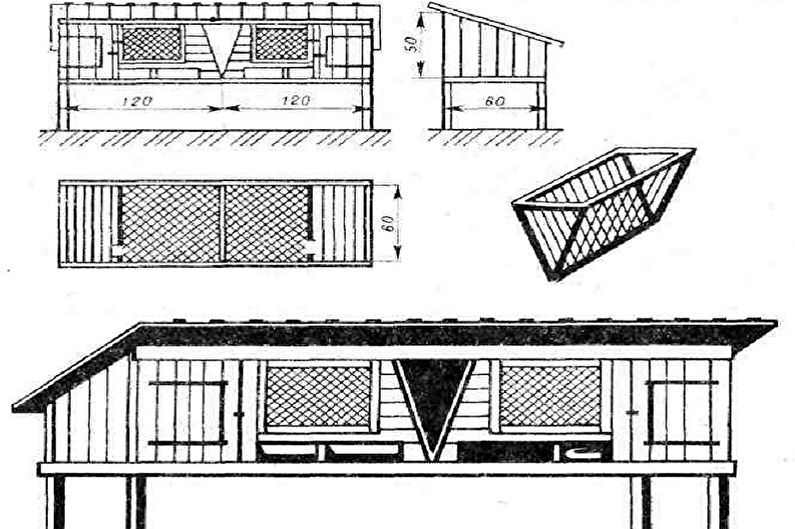
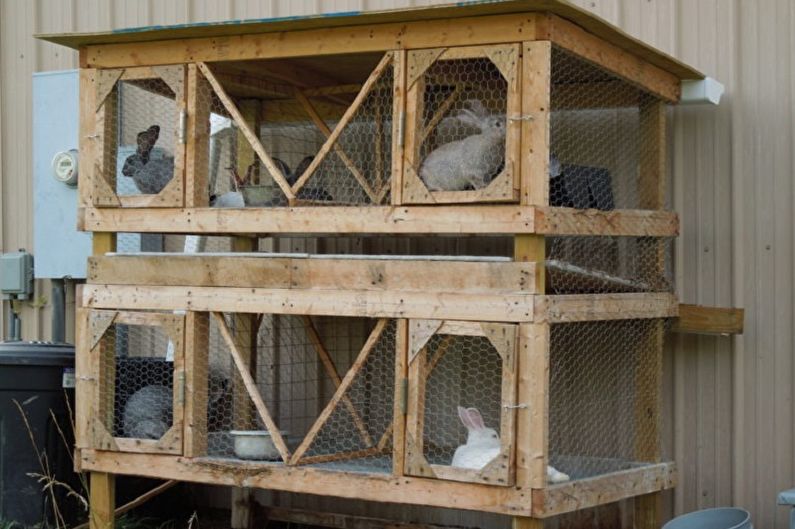
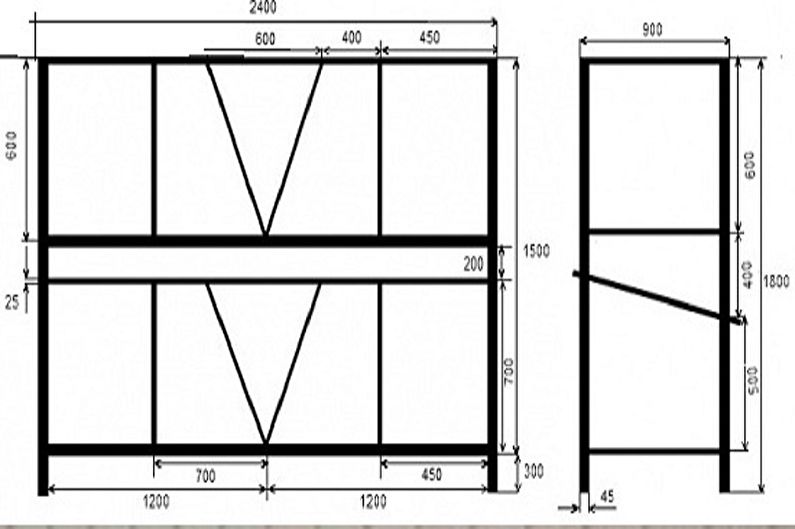
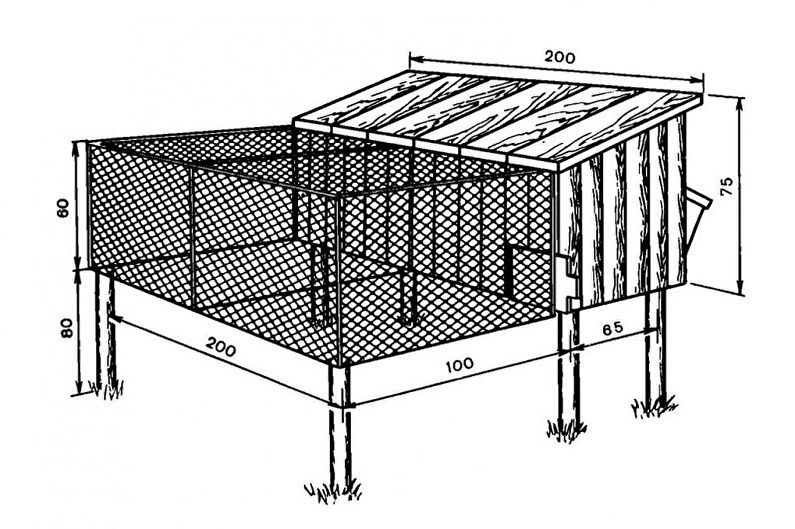
The choice of materials and accessories
The main criteria when choosing materials are their strength, resistance to mechanical stress and environmental features. Also, do not forget that rabbits belong to rodents and easily damage thin wood. In general, it is recommended to saturate any boards before use with antiseptics, and even better - with polyurethane varnish (liquid plastic). The biological waste of these animals is very caustic, so you should take care of regularly cleaning the flooring.
It is important that all surrounding surfaces do not evaporate harmful substances and do not interfere with the natural circulation of air. A healthy microclimate contributes to the proper development of pets, protecting them from all kinds of diseases. Various connecting elements, such as fasteners, door curtains, guides for feeders and drawers, must be of high quality, with good protection against corrosion - this will make it possible to operate the enclosures for the longest possible time.

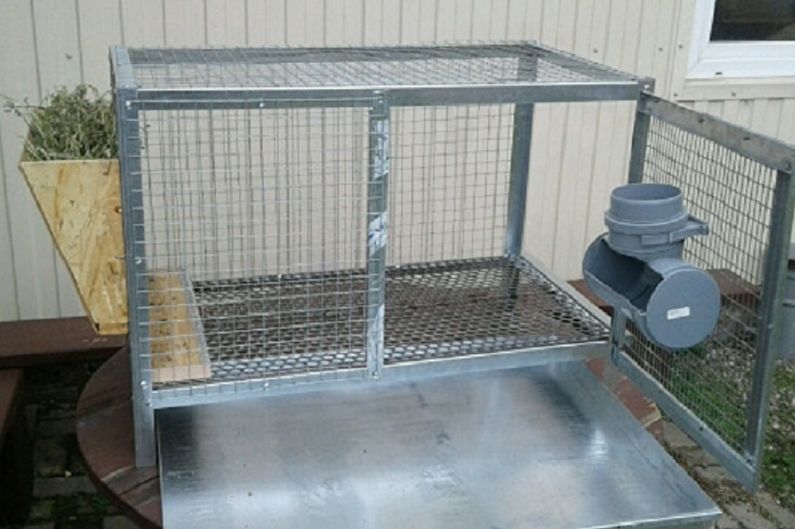
Building
For the manufacture of rabbit cages, in the first place, a frame is made of a metal profile and / or bars. Then a welded mesh, lattices made of wood, chipboards or plywood are attached to it. The back, and often the side walls are made solid, but micropores in the material should easily allow air and moisture to pass through.
One of the most crucial moments is the arrangement of the floor. Replaceable rack-type constructions that can be folded and unfolded, removed and easily washed are best proven. As a floor, plastic sleepers located at a small interval, boards impregnated with polyurethane varnish, bamboo lamellas, mesh can be used. The cell size should be such that the paws of the animals do not get stuck, and the rods do not bend under their weight. The metal mesh is convenient from the point of view of cleaning, but it provokes the disease of rabbits with dermatitis, which makes it painful for them to walk, so it is still advisable to give preference to plastic or wood.
The rabbit cover is at the same time a canopy that protects pets from rain and bright sun, as well as an additional door for opening and closing the enclosure. Usually it is attached with a slight slope, making of a tight-fitting sheet of plywood or other material not prone to drying out or deformation. The roof can not be made metal, otherwise in the heat it will overheat the air in the cells. For the street, such an option as soft tiles, slate, ondulin is quite suitable.
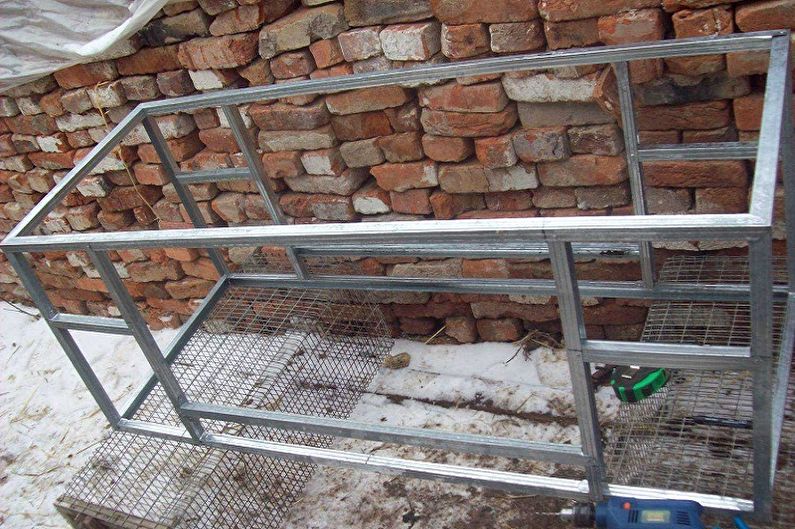


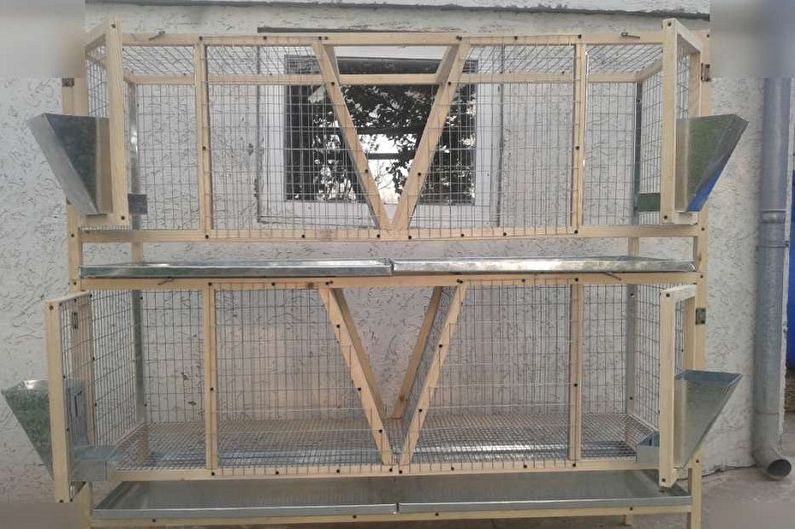
Installation and operation
Ready-made cages for rabbits are recommended to be installed at a height of at least 0.3-0.5 m from the floor, with the exception of portable structures designed for walking animals on the grass. In other cases, the elevated position of the base will protect the pets from moisture. In the open air, enclosures are best placed in shaded areas, facades to the east or west.
In the cold season, you need to take care of the insulation of aviaries. For this purpose, the outer wall upholstery is suitable for breathable gaskets (mineral wool, piercing mats, wood fiber boards, polystyrene foam, bales of hay / straw / flax stalks, etc.). In order for the cells to last as long as possible, they should be cleaned regularly, protected from moisture, and minor repairs must be carried out in a timely manner.
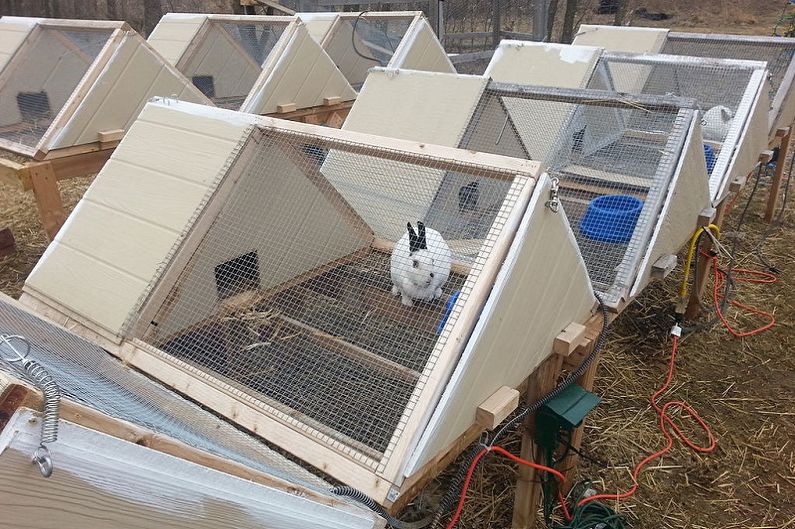

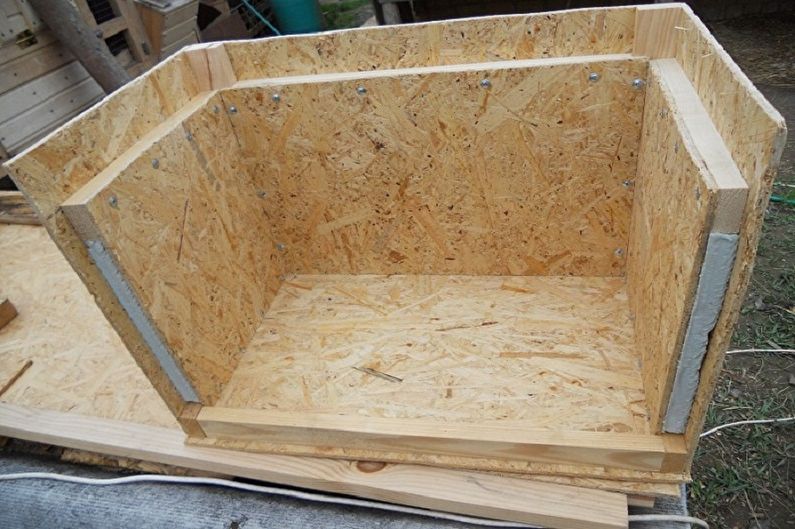
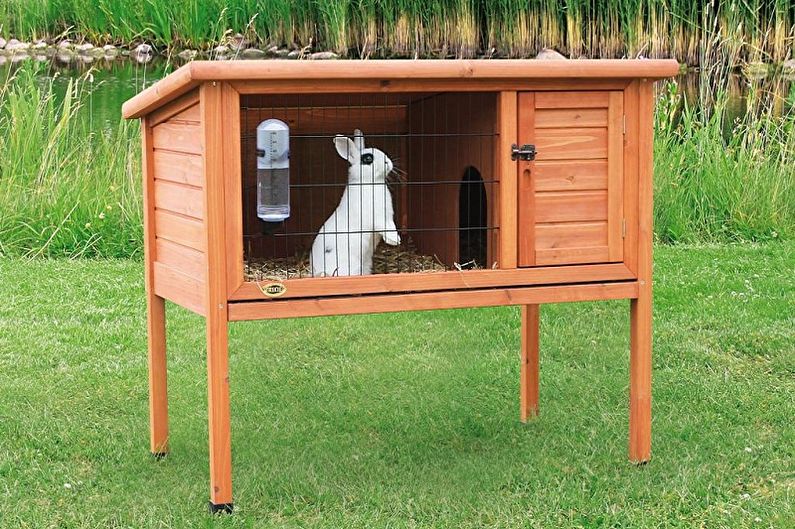
DIY rabbit cages - photo
A large number of interesting ideas and examples of building cages for rabbits with their own hands are collected in the photo gallery on this page.If desired, any of the presented options can be repeated at home, independently making a comfortable and durable aviary for fluffy rodents. In each case, the type of construction, materials and dimensions are recommended to be selected individually, focusing on the number, type and breed of animals, as well as the features of their maintenance in a particular farm.


